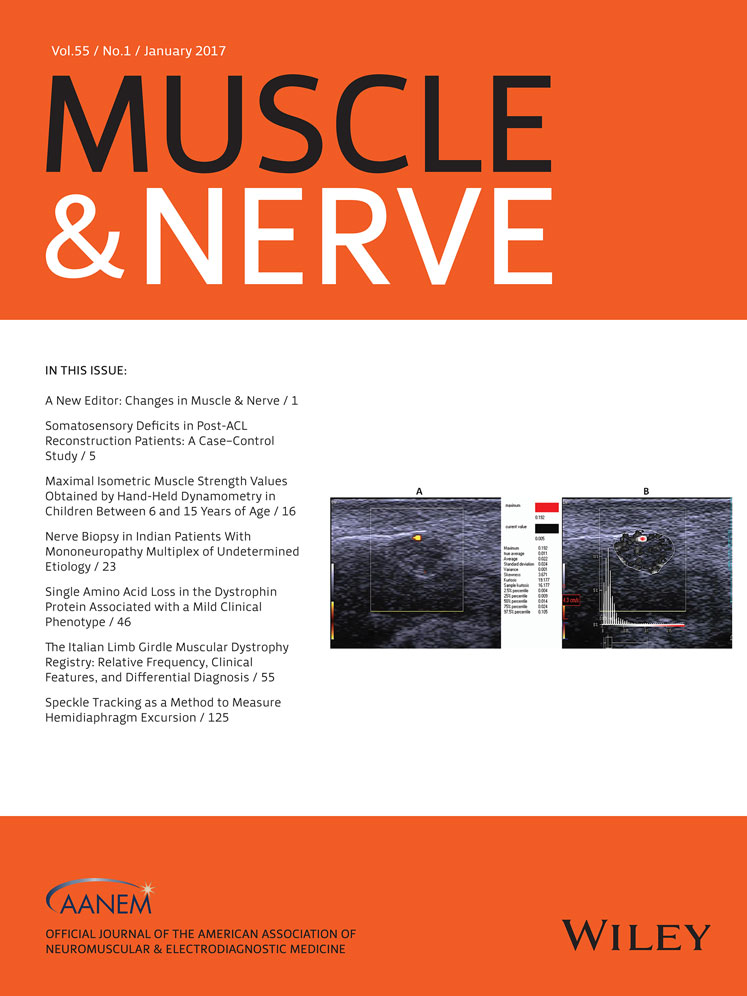Variations in the distal branches of the superficial fibular sensory nerve
ABSTRACT
Introduction: We evaluated anatomic variations of distal branches of the superficial fibular sensory nerve electrophysiologically. Methods: Orthodromic nerve conduction studies (NCS) of the first and third branches (M-I, M-III) of the medial dorsal cutaneous nerve and the fourth and fifth branches (I-IV, I-V) of the intermediate dorsal cutaneous nerve (IDCN) were performed. To find anomalous innervations from the dorsal sural nerve (DSN) in the IDCN territory, NCS of the fourth and fifth branches (S-IV, S-V) of the DSN were also performed. Results: All sensory nerve action potentials (SNAPs) of M-I and M-III could be obtained bilaterally from 31 healthy Japanese volunteers. SNAPs of I-IV and I-V were recordable in 85.5% and 43.5% of feet, respectively. Anomalous innervations from the DSN were confirmed in 71.0% of S-IV and 93.5% of S-V. Conclusion: These results suggest that anatomical variations in the IDCN territory are very frequent in Japanese subjects. Muscle Nerve 55: 74–76, 2017




